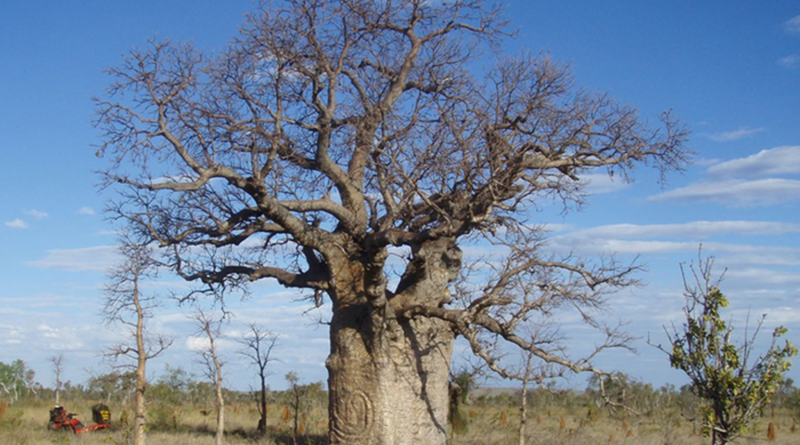Researchers Race to Preserve Centuries-Old Carvings on Australian Boab Trees

After two years of fieldwork, a group of researchers and First Nations Australians have announced the discovery of centuries-old carvings on 12 boab trees in Australia’s Tanami Desert.
Carvings on boabs were first reported in the mid-19th century, but they weren’t investigated thoroughly until a century later. The carvings depict snake figures believed by the team to be the King Brown Snake, a character in Indigenous oral traditions, among geometric patterns and other representations of animals. The team’s research describing the carvings is published this week in the journal Antiquity.
The boab (or bottle) tree (Adansonia gregorii) may live over 1,000 years, based on the dating of the closely related baobab trees in South Africa. They have very thick, often squat trunks that give them their nickname.
Unlike many trees, the boab’s soft inner trunk does not record seasonal growth rings, making it difficult to precisely date them. Instead of normal dendrochronological methods, getting a precise age for these trees requires radiocarbon dating.
Despite how long some of the carvings—and the trees on which they were carved—have persisted, their existence is fragile. “Unlike most Australian trees, the inner wood of boabs is soft and fibrous and when the trees die, they just collapse,” said Sue O’Connor, an archaeologist at the Australian National University, in an Australian National University release.
G/O Media may get a commission

Great deals happening right now
Sad that Prime Day is over? Don’t be! Best Buy is picking up the slack with a sales event of its own. From smart TVs to earbuds to laptops, there are plenty of opportunities to save.

“Sadly, after lasting centuries if not millennia, this incredible artwork, which is equally as significant as the rock art Indigenous Australians are famous for, is now in danger of being lost,” O’Connor added.
The pith, seeds, and roots of the tree are eaten, and parts of the tree have medicinal uses among First Nations Australians. The bark is relatively smooth, leaving the recently catalogued carvings clear to the naked eye.
The team wants to date the Australian boabs directly, to get a sense of the potential age of the carvings. Only 12 boabs were identified with carvings in the recent fieldwork, but previous research identified 22 boabs with Indigenous carvings.
Older boabs often have hollow trunks, which can make them more prone to collapse; according to Brittanica, the recent deaths of some of the largest baobabs (a closely related species) have been linked to the effects of climate change.
“We are in a race against time to document this invaluable cultural heritage,” said Brenda Garstone, a Traditional Owner who collaborated with the research team, in the university release.
Besides the snake dendroglyphs, the team found carvings of emu tracks, kangaroo tracks, a lizard-like figure, and geometric markings. They also found First Nations stone artifacts around some of the larger boabs.
Aerial imagery indicated hundreds more boabs in the surrounding area of the Tanami, and the team intends to check those boabs for carvings as well.
More: Of Course the Oldest Known Rock Painting in Australia Is of a Kangaroo

